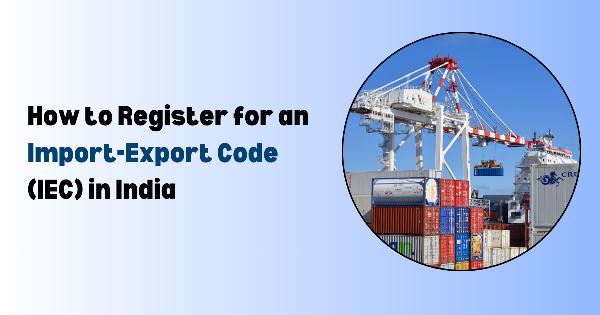How to register for an import-export code

Strong 8k brings an ultra-HD IPTV experience to your living room and your pocket.
Introduction of import export code
The Director General of Foreign Trade (DGFT) of India issues unique 10-digit codes known as import-export codes (IECs). Any individual or organization engaged in import or export operations within the nation must comply with it. In addition to acting as a registration number, the IEC enables efficient customs clearance, trade statistic tracking, and other trade-related operations.
Conditions Under Which IEC Is Necessary
An Import-Export Code (IEC) is necessary under the following conditions:
Import and Export of Goods: If you are involved in importing or exporting any goods, regardless of the value or quantity, an IEC is mandatory.
Trading House: If you are a trading house engaged in importing and exporting goods for others, you need an IEC.
Manufacturer: If you are a manufacturer exporting your products directly or indirectly, an IEC is required.
Service Provider: If you are providing services that involve the import or export of goods (e.g., software development, engineering services), an IEC may be necessary.
E-commerce: An IEC is required if you are involved in e-commerce and import or export goods through online platforms.
Special Economic Zone (SEZ) Units: If you are operating a unit in an SEZ and are involved in import or export activities, an IEC is necessary.
Steps to Import Export Code Registration:
1. Gather Necessary Documents:
PAN card of the individual or entity
Address proof (Aadhaar card, passport, voter ID, etc.)
Bank account details
Passport size photographs (recent)
Declaration form (available on the DGFT website)
2. Submit the Application:
You can apply online through the Integrated Customs Declaration System (ICDS) portal on the DGFT website.
Alternatively, you can apply manually to the nearest regional office of the DGFT.
3. Pay the Fees:
The IEC registration fee is nominal and can be paid online through the ICDS portal.
Import Export Code Verification and Approval:
The DGFT will verify the documents submitted and conduct a background check.
The IEC will be issued and communicated to the applicant if everything is in order.
4. Verification and Approval:
The DGFT will verify the documents submitted and conduct a background check.
The IEC will be issued and communicated to the applicant if everything is in order.
Certificate of Importer Exporter Code (CIEC):
The person who applies will be issued a Certificate of Importer Exporter Code (CIEC) upon approval of the IEC. This certificate includes the importer/exporter's name, the IEC number, and other pertinent information.
Import-Export Code Registration Fees:
The small and flexible IEC registration fees are subject to change. Please visit the DGFT website to view the most recent fee schedule.
Import-Export Code Verification:
To verify the authenticity of an IEC number, you can use the online verification tool provided by the DGFT on their website.
Final Thoughts:
Anyone participating in import-export operations in India must obtain an IEC. It is possible to finish the procedure online, and it is relatively simple. You can effectively register for an IEC and simplify your import-export procedures by following the instructions provided in this guide.
Note: IndiBlogHub features both user-submitted and editorial content. We do not verify third-party contributions. Read our Disclaimer and Privacy Policyfor details.







